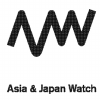Tokyo Electric Power Co. was struggling to determine the cause of the highest radiation levels detected at the Fukushima No. 1 nuclear power plant since the disaster started March 11.
Tokyo Electric Power Co. was struggling to determine the cause of the highest radiation levels detected at the Fukushima No. 1 nuclear power plant since the disaster started March 11.
TEPCO said Aug. 1 that radiation levels of at least 10 sieverts per hour, or 10,000 millisieverts per hour, were found at piping connected to the main exhaust tower between the No. 1 and No. 2 reactors at the Fukushima plant.
That level of radiation would mean death if absorbed all at once. TEPCO officials have not yet determined its source.
Monitoring posts around the plant have not detected higher levels of radiation, officials say. But that is no cause for reassurance.
The fact that such high levels of radiation were detected near piping connected to the outer atmosphere is further evidence that radioactive materials have spewed from the crippled reactors at much higher levels than previously believed.
It is possible similar high levels of radiation may be found on the plant grounds. TEPCO workers will have to carefully test for radiation levels, meaning further delays before the plant is brought under control.
Explosions at the No. 1, No. 3 and No. 4 reactors left rubble scattered around the reactors, creating hurdles for plant workers. Unmanned heavy equipment had been used to remove that rubble to reduce the possibility of workers becoming overexposed.
The extremely high level of radiation was detected when workers were testing for radiation near the piping after rubble had been cleared away.
On July 31, a gamma ray camera was used to determine which areas had unusually high levels of radiation. A further test on Aug. 1 found radiation levels of 10 sieverts per hour on the outside of piping that connects to the main exhaust tower.
The three workers tested for radiation, using measuring equipment with a maximum measure of 10 sieverts, which means the actual level of radiation was likely higher.
Because that level of radiation was detected on the outside of the piping, the level inside the piping could be even higher.
The workers were exposed to a maximum level of 4 millisieverts of radiation. The area where the high level of radiation was detected was subsequently made off-limits to workers.
The highest level of radiation detected at the Fukushima plant until now was 4 sieverts per hour, detected in June inside the No. 1 reactor building.
The piping was used immediately after the accident at the Fukushima plant to vent gases from within the reactor containment vessel to the outside atmosphere.
Venting was conducted right after the March 11 Great East Japan Earthquake to reduce the pressure within the containment vessel to prevent an explosion. It is possible that highly radioactive materials may have adhered to the piping during the venting process.
However, TEPCO officials said gases were no longer flowing in the piping because the emergency gas processing mechanism that connects to the piping is not currently being used. For that reason, officials said there was no danger of radioactive materials escaping into the outside atmosphere.
TEPCO officials said plant workers have not been working in the area where the high levels of radiation were detected. Thus, the detection of 10 sieverts of radiation there will not likely affect the restoration of various functions at the plant.
TEPCO officials had assumed that high levels of radiation would mainly be detected within the reactor buildings containing the cores where the meltdowns occurred.
However, the detection of high radiation levels outside those buildings means more careful radiation testing will be required to ensure workers are not overexposed.

